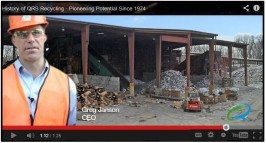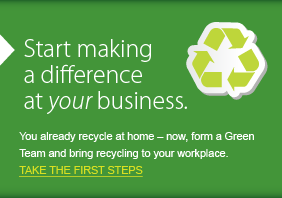
Plastic Materials Definitions
Polyethylene Terephthalate (PET, #1)
-
Consumers know this tough, clear plastic as the material used to make water bottles and soft drink bottles. Widely accepted in recycling facilities, PET is reused in fibers, fiberfill, clothing, hats, luggage and health-care product containers.
High Density Polyethylene (HDPE, #2)
-
Manufacturers use HDPE—a stiff, translucent plastic—commonly in making milk, juice, water and laundry product containers. Recycled HDPE plastic can become cable jacketing, toys, packaging and plastic bags, plumbing pipes and disposable housewares.
Polyvinyl Chloride (PVC, #3)
-
PVC plastic, also called vinyl, has either a rigid or flexible composition. The construction industry primarily uses rigid PVC for pipes, fittings, siding and windows. Flexible vinyl can make up cable and wire insulations, synthetic leather products, floor coverings, medical tubing and many other products. Both types of PVC plastic are recyclable for use in appliance housing, automotive trims, business equipment components, construction materials and consumer goods packaging.
Low Density Polyethylene (LDPE, #4)
-
LDPE plastic’s low melting point makes it a common material for plastic grocery bags, dry-cleaning bags and other plastic film applications. As with HDPE, a wide variety of consumer goods can stem from recycled LDPE.
Polypropylene (PP, #5)
-
Manufacturers use polypropylene, a rigid plastic with excellent resistance to chemicals and heat, in products ranging from furniture to fibers to large molded parts for cars and consumer appliances. Industrial products, automotive trims and battery cases, carpeting and packaging and general commodities can all spring from recycled polypropylene.
Polystyrene (PS, #6)
-
Familiar to consumers as Styrofoam, polystyrene dominates the plastics market (along with polyethylenes) due to its low cost and versatility. Typical products containing rigid or foamed polystyrene include packaging, containers, lids, cups and trays. Recycled polystyrene cab become containers, packaging, appliance components, toys and general commodity items.
Commonly Recycled Types of Plastic
-
Municipal recycling programs tend to accept PET and HDPE more than other plastics, generally picking up these products curbside from residences on a weekly schedule. Some retail stores and grocery stores have begun accepting LDPE plastics (mainly grocery bags) for recycling at individual locations. However, curbside recycling programs rarely accept polyvinyl chloride, polypropylene and polystyrene.
History of QRS Recycling
|
|
 |
Learn more about QRS Single Stream Recycling — how it works, how it helps, and how easy it can be to implement in your business. More Videos








